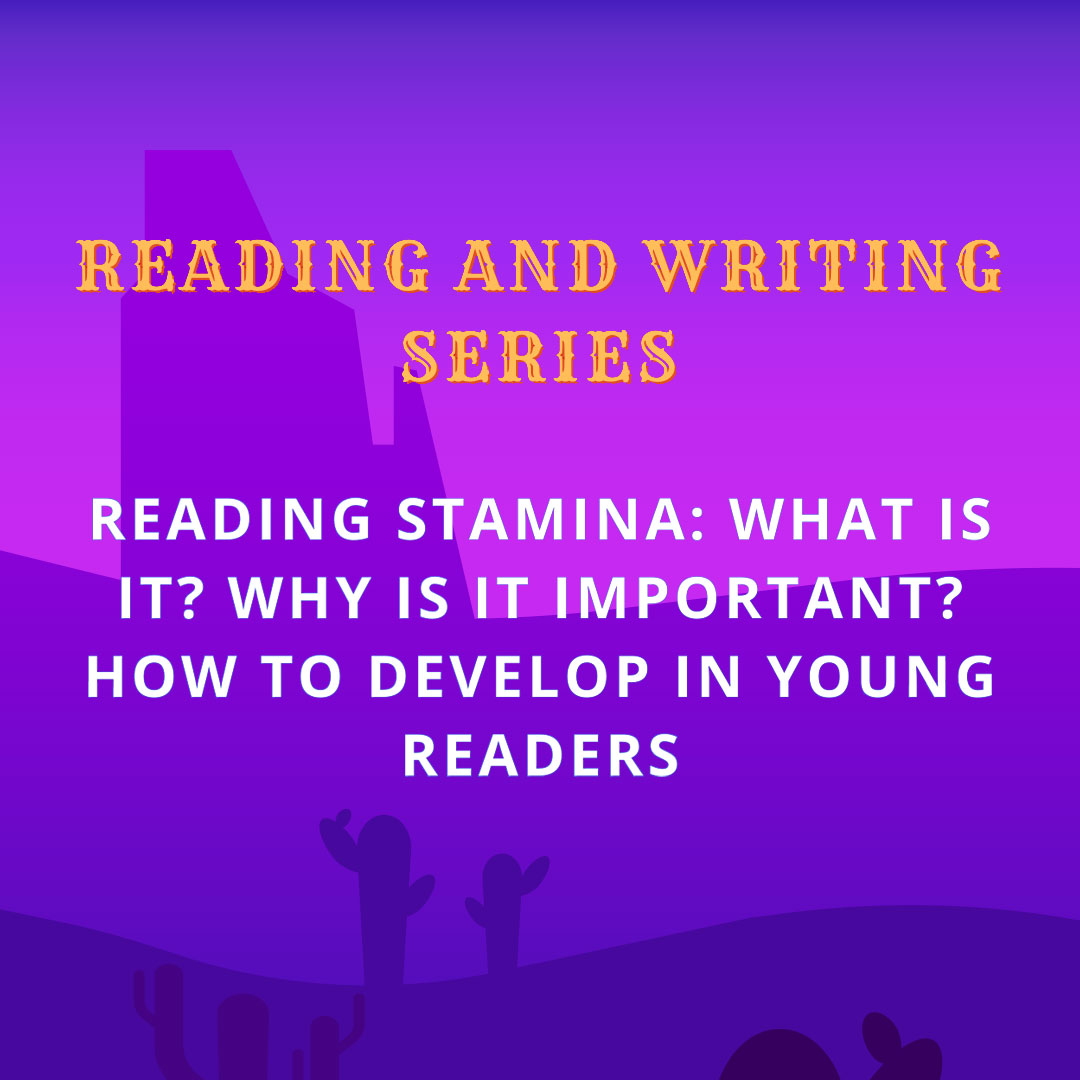Reading Stamina: What is it? Why is it Important?
Reading stamina is the reading equivalent of physical fitness. It’s the stamina you need to read for extended periods of time, and it can be developed with practice. The reading muscles – your reading skills – get stronger as they’re used, just like any other muscle in your body. If you’ve ever exercised before, you know that after a few days or weeks of working out, you’ll notice new strength and endurance. You’ll also see an increase in confidence: knowing that even if the going gets tough (like when reading a challenging book), you can push through because your reading stamina has improved dramatically. But reading stamina doesn’t just happen on its own!
A child’s ability to read is one of the most critical skills that they will ever develop. When an individual has good literacy stamina, it means they can experiment with more challenging texts and go on longer adventures in books! We consider stamina the ability to read significant stretches of time.

Two Types of Reading Stamina
I would argue there are two different types of stamina needed for reading which I will define. But an emphasis on stamina is even more critical today. Technology has shortened our attention spans. This is becoming a severe issue with children and adults. Developing strong reading stamina for silent reading is vital for children just learning to read. After your kids start to read independently, it is essential that they exercise this skill frequently and at increasing durations. This type of reading helps build fluency, vocabulary, sentence structure, and more.
Silent sustained.
Reading a storybook, chapter book, or even a kid’s novel independently and for an extended time is what we call silent sustained reading. The child is able to read independently at their own pace and focus on the text and the story. How long they can maintain this is their level of stamina.
Task-based.
In the past, we have only defined reading stamina as a silent independent reading of a text for a period of time. But most reading by older students in later grades and throughout college and on the job consists of what I would characterize as task-based reading. We are trying to find some specific information, an answer to a question, etc.

Why is reading stamina so important?
In the case of early readers and for struggling readers, silent sustained reading is vitally essential and emphasized for these young readers. This type of reading helps them develop their stamina muscle!
Improving reading stamina helps young readers build confidence as they are reading independently for more extended periods. It also creates a love of reading because children can pick books they enjoy and want to read!
Silent sustained reading helps build reading fluency, reading comprehension, spelling, and reading vocabulary. Building literacy skills early will help your child succeed.
Furthermore, the standardized tests that most states implement all require a significant amount of reading. Improving your child’s stamina will help them perform better in these tests simply because they can focus longer and not be distracted easily.
How to Build Stamina in Your Child
Go to the library!
This seems obvious, but we all tend to want to “Google” everything. Many kids have barely stepped foot in a library or taken the time to browse books that interest them. Ask the teacher if they can go to the school library mixed in with your trips to your local library.
Vary how the reading is done.
Parents should consider this in terms of reading independently, reading to someone, or listening to reading. The amount of time spent reading should include a combination of all three. Allow reading time in your child’s schedule.
Have them read books that are kid-friendly and not too difficult for their reading level (or age). The reading should be done at a pace that is comfortable but challenging enough to build stamina.
Read with your kids!
You can continue the practice of reading together, even if they are reading on their own. You can start this at any age, but it is especially helpful for younger readers who still need you to help them with reading words and recognizing the sounds letters make.
Developing reading stamina early will pay off big time! Building literacy skills helps children succeed in school academically as well as socially later on down the road.

Model for your child, show them what it is like when you read with good endurance and not.
Have your child describe to you what you did and didn’t do. Create a list that depicts a deeply interested reader from the standpoint of their body language, and show how their face appears while they read. Then, create a similar list of what a distracted reader looks like. After that, make a Stamina list using the following guidelines:
- Stamina Guidelines
- Read without looking up for as long as I could
- Read comfortably with my head up
- Kept quiet during silent reading
- Don’t be distracted by television or someone moving around the room
- Meet your daily stamina goal
- Laugh, smile, or frown is ok. I’m really into my book
- Stay off my phone, so I don’t take away from my reading time
- If I get distracted, I got back on task quickly
- Can’t wait to keep reading this book
Select only the right books for your child
If your child is old enough to read on his own, assist him in selecting books that he can read independently. This implies he must be able to understand almost every word in the text correctly. In this case, avoid giving him any books that are too difficult to comprehend alone. If you’re going to check reading comprehension, make sure some of the reading is done aloud.

Set modest objectives
Even with the most exciting book, most toddlers and preschoolers struggle to sit for lengthy periods! Begin by setting a limit of just a few minutes on book time and build from there.
Every week or so, increase reading time but don’t increase it too much. Our goal is to build stamina over the course of months or years, gradually!
Age-defined goals.
A good starting goal is:
Kindergarten: 7-8 minutes of stamina
Primary: 10-12 minutes
Intermediate: 12-14 minutes
Celebrate Progress
Without getting too caught up on the number of minutes spent reading, acknowledge the time they spend reading. Have them talk about what they liked about the books they read, make plans for another trip to the library, and make sure you share this with other family members. Maybe a trip to their favorite fast food or meal would be another, give your kids a target and see how far they go!

In Conclusion
Building reading stamina is vital for everyone. Not only does it improve their reading skills, but it will also improve their writing. Good readers are nearly always good writers. Teaching reading stamina at home and in the classroom will pay dividends in your child’s education. Not only will it help their basic skills, other skills such as problem-solving, confidence, and even persistence will benefit. Good reading stamina will help them perform better on tests and other activities such as reading comprehension checks.
Your child’s teachers are working hard to help your child, and reinforcing these methods at home will propel your child further and faster in their academic journey.




